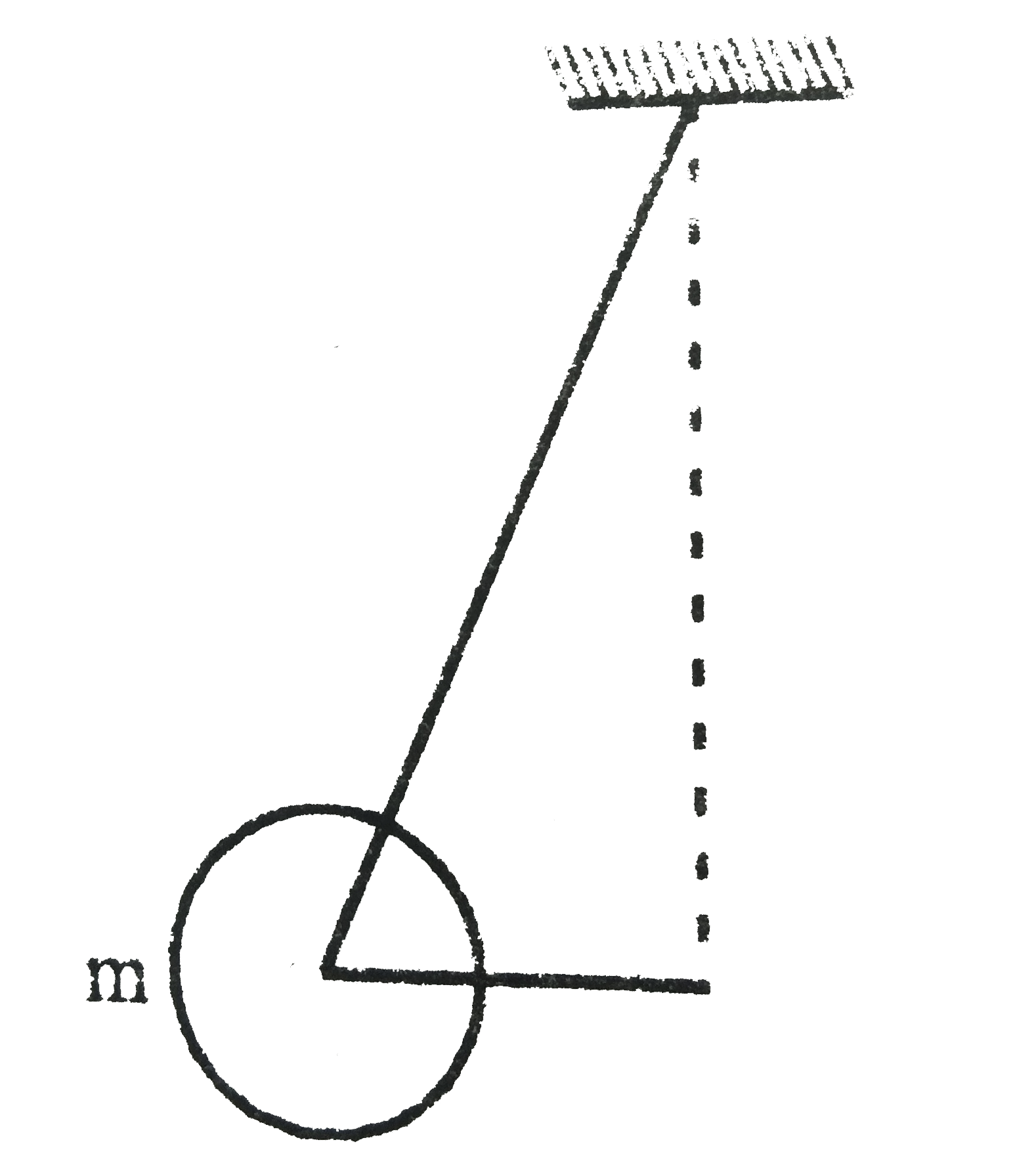The mass of a cube has error of 2% and the length of its edge has error of 1%. What will be the maximum percentage error in calculation of its density. Solution in Gujrati
Density of cube (p)=MV=ML3)∴(ΔpP)max×100=(ΔMM×100)+3ΔLL×100)=2%+3(1%)=5%
Topper's Solved these Questions
- BASIC MATHSBOOK - ALLEN CHAPTER - BASIC MATHSEXERCISE - Question
1 Videos
- BASIC MATHSBOOK - ALLEN CHAPTER - BASIC MATHSEXERCISE - UNIT & DIMENSIONS
19 Videos
- AIIMS 2019BOOK - ALLEN CHAPTER - AIIMS 2019EXERCISE - PHYSICS
39 Videos
- CIRCULAR MOTIONBOOK - ALLEN CHAPTER - CIRCULAR MOTIONEXERCISE - EXERCISE (J-A)
6 Videos
Similar Questions
Find dydx for the following :
(i) y=x7/2 (ii) y=x−3
(iii)y=x (iv) y=x5+x3+4x1/2+7
(v) y=5x4+6x3/2+9x (vi) y=ax2+bx+C
(Vii)y=3x^(5)-3x-1/x
View SolutionFind the SI unit of (i) area, (ii) density, and (iii) momentum.
View SolutionA simple pendulum executing SHM in a straight line has zero velocity at 'A' and 'B' whose distances form 'O' in the same line OAB are 'a' and 'b'. If the velocity half wat between them is 'v' then its time period is
View SolutionA ball of mass (m)0.5kg is attached to the end of a string having length (L)0.5m. The ball is rotated on a horizontal circular path about vertical axis. The maximum tension that the string can bear is 324N. The maximum possible value of angular velocity of ball (radian/s) is -
 .
.
View SolutionFind the percentage error in calculating the surface area of a cubical box if an error of 1% is made in measuring the lengths of edges of the cube.
View SolutionFind the percentage error in calculating the volume of a cubical box if an error if 1% is made in measuring the length of edges of the cube.
View SolutionFind the percentage error in calculating the volume of a cubical box if an error of 1% is made in measuring the length of edges of the cube.
View SolutionFind the percentage error in calculating the surface area of a cubical box if an error of 1% is made in measuring the lengths of edges of the cube.
View SolutionWhat is error in density of a cube when its mass is uncertainl by +-2 % and length of its edge is uncertain by +- 1% ?
View SolutionWhat is the maximum percentage error in density of body if percentage error in measurement of mass is 4% , and percentage error in measurement of side 1% ?
View SolutionWe know that the density of a cube can be measured by measuring its mass and length of its side. If the maximum errors in the measurement of mass and length are 3% and 2% respectively, what is the maximum error in the measurement of the density of the cube?
View SolutionWe know that the density of a cube can be measured by measuring its mass and length of its side. If the maximum errors in the measurement of mass and length are 3% and 2% respectively, what is the maximum error in the measurement of the density of the cube?
View SolutionThe error in the measurement of length and radius of a cylinder are 1% and 2% respectively. The maximum percentage of error in its volume is
View SolutionFind the percentage error in calculating the surface area of a cubical box if an error of 1% is made in measuring the lengths of edges of the cube.
View Solutionfind the percentage error in calculating the volume of the cubical box if an error of 1% is made in measuring the length of the edges of the cube.
View SolutionFind the percentage error in calculating the volume of a cubical box if an error if 1% is made in measuring the length of edges of the cube.
View Solution
